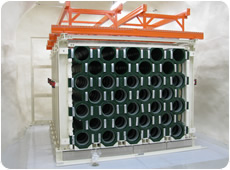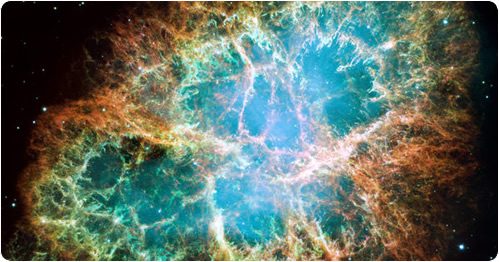
HALO (Helium and Lead Observatory) is a dedicated supernova neutrino detector that is presently under construction underground at SNOLAB in the Creighton Mine in Sudbury Ontario Canada.
The HALO experiment uses 76 tonnes of lead as a detector medium which will be instrumented with approximately 384 meters of 3He neutron detectors. Charged- and neutral-current neutrino interactions in lead expel neutrons from the lead nuclei making a burst of detected neutrons the signature for the detection of a supernova. Large neutron excess of a heavy nucleus like Pb acts to Pauli-block p to n transitions induced by electron anti-neutrinos, making HALO primarily sensitive to electron neutrinos. As a part of the Supernova Early Warning System (SNEWS), HALO will help detect galactic supernovae by their neutrino burst allowing time to notify both professional and amateur astronomers.
Neutrino detection based on high Z materials will give the largest possible cross sections and best possible neutrino detection efficiency. Lead has an attractively large neutrino-scattering cross section per nucleon compared with other elements. As a result most of the scattering events produce neutrons, the signature signal of a galactic supernova.
At energies typical of supernova neutrinos, by the conservation of energy the CC process is only available for the electron neutrino and the electron antineutrino. Lead has a large neutron excess, which strongly inhibits the proton to neutron transitions due to Pauli blocking. In contrast, the reaction involving the electron neutrino in heavy elements has a large enhancement from the nuclear Coulomb effect in comparison to lighter elements. The suppression of electron antineutrinos and the enhancement of electron neutrinos make HALO uniquely sensitive to electron neutrinos.. This large neutron excess allows many opportunities for neutron to proton transitions of the type
νe + n → e- + p
to proceed without Pauli hindrance. This predominant reaction in HALO produces Bi nuclei in excited states which decay by neutron emission:
νe + Pb → e- + Bi* Bi* → Bi + g + n
![]()
Supernovae represent a catastrophic event for a star that e ectively ends its active lifetime. These events can briefly outshine entire galaxies and radiate more energy than our sun will in its entire lifetime. They are also the primary source of heavy elements in the universe. On average, a supernova will occur about once every 25-50 years in a galaxy the size of the Milky Way. Put another way, a star explodes every second or so somewhere in the universe.Exactly how a star ends its life depends in part on its mass. A star can go supernova in one of two ways in which each type is broken up into subtypes.
Type I supernova: star accumulates matter from a nearby neighbor until a runaway nuclear reaction ignites.
Type II supernova: star runs out of nuclear fuel and collapses under its own gravity.
Since neutrinos are thought to originate only from the cores of massive stars as they die, HALO is only sensitive to supernovae resulting from gravitational collapse (Types II, Ib/c).The gravitational collapse mechanism occurs in massive stars heavier than approximately eight solar masses.













